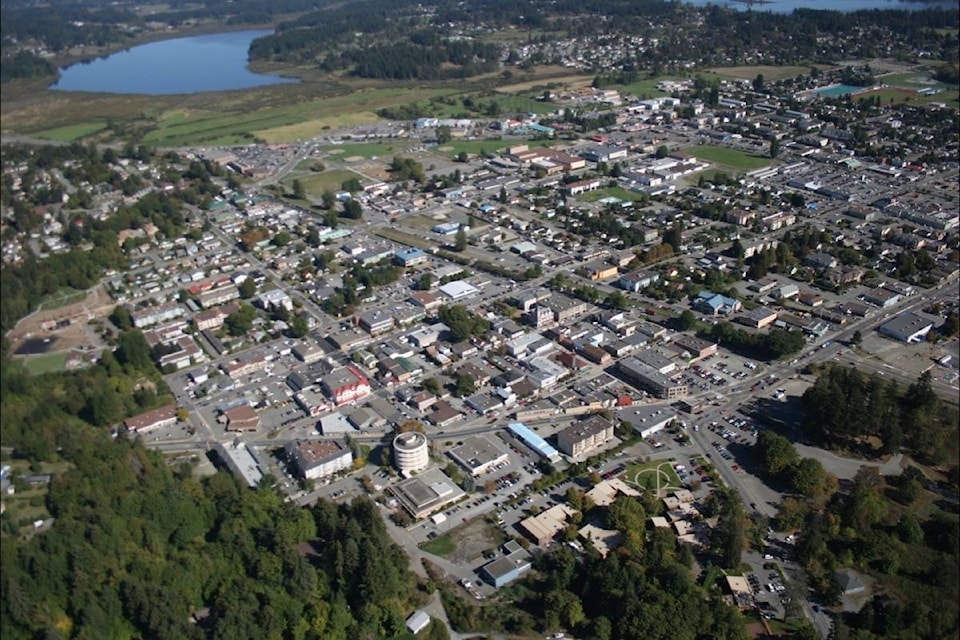The amalgamation of North Cowichan and Duncan has been recommended by the Citizens’ Assembly.
The assembly’s final report was presented at a special meeting of the Duncan and North Cowichan elected officials on May 23.
The 36-member assembly cited a number of benefits to amalgamation, but said the cost-savings to taxpayers from such a move would be “negligible”.
“The assembly is mindful that their recommendation carries significant implications and that this is a major undertaking,” said assembly chairman Peter MacLeod.
“Nevertheless, the assembly reached a clear consensus and believes that Duncan and North Cowichan will be stronger together.”
As part of the 2014 municipal elections, both Duncan and North Cowichan councils agreed to include on the ballot a non-binding opinion question in regards to exploring the costs and benefits of amalgamating the two municipalities.
In North Cowichan, 68 per cent of those casting ballots voted in favour of conducting an amalgamation study, and in Duncan, 52 per cent of voters were also in favour.
The proposal to amalgamate would still need the approval of both councils to proceed, and then the province would need to agree, as well as the residents of both communities through a public referendum.
Assembly members concluded that a unified municipality will be better able to manage future growth, afford quality public services and infrastructure, and attract outside investment.
The assembly also reported that its members felt that residents would benefit from a more coordinated approach to local governance and planning, and was also careful to underscore the importance of protecting the area’s many distinct communities.
It believes the character of these communities can be preserved and enhanced through the development of a new Official Community Plan, as well as local area plans.
North Cowichan Mayor Jon Lefebure said each council will now individually review the assembly’s report and recommendations, which were made over a five-month period from January to April, and determine if they want to move ahead with an amalgamation process.
“We all appreciate all the work the assembly has done on this, but we’re nowhere near any final decisions on this issue,” Lefebure said.
“One of the issues raised was when and if we should hold a public referendum. The assembly said that because of the time needed to educate the public and prepare for the referendum, it should be held at the same time as the municipal election in 2018. Even if a referendum then calls for amalgamation, it could still take years because we just don’t know at this stage what will be involved.”
Lefebure said many people believed that amalgamation would be a cost-saving measure as redundancies would be reduced, but the assembly is clear in stating that likely wouldn’t happen.
“In fact, the costs could be more in some cases, and that means taxes could actually go up as a result for some people,” he said.
“I found the assembly’s report interesting, but I personally haven’t made up my mind yet. I want the chance to talk to North Cowichan’s financial people and confirm some of the report’s results. I’m not sure I understand and trust some of the conclusions that were made regarding finances.”
Duncan Mayor Phil Kent also thanks the assembly members for their hard work, but said he will reserve judgment on the report until after his council has had time to study and discuss it.
He said the fact that there may be little, if any, cost savings to amalgamation may be less important than assessing the collective vision of the citizens of both communities on what they want the outcome of the process to be.
“Amalgamation may be money neutral, but it’s an opportunity for people to put their heads together to determine what service levels they want and what they would like to see achieved,” Kent said.
“I think we have a responsibility to ensure that the public is well informed on what would be involved with amalgamation before they go to the ballot box to let their views known on this issue with confidence. There’s still a lot of work to do to fill in the gaps in the report and have further questions answered.”
